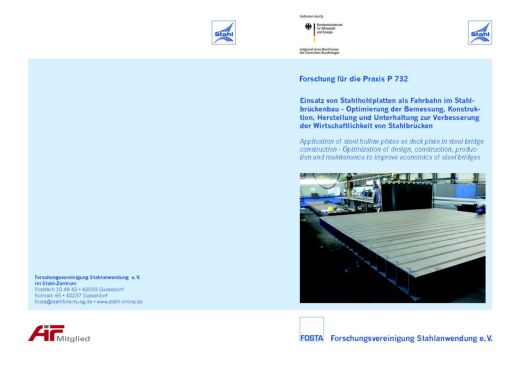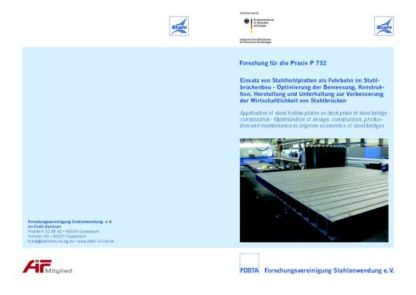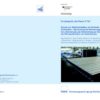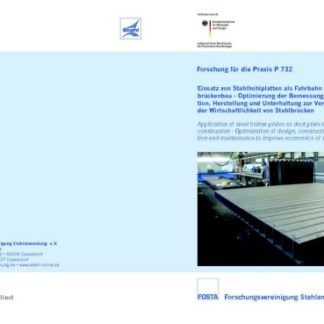Description
P 732 – Application of steel hollow plates as deck plate in steel bridge construction – Optimization of design, construction, production and maintenance to improve economics of steel bridges
In comparison to orthotropic plates, which are normally used in steel bridge construction, hollow plates, which consist of an upper and lower cover plate with intermediate webs, show a more efficient structural behaviour, due to higher transverse stiffness.
In contrast to this beneficial structural behaviour, a cost-efficient assembly was not possible with the current welding methods so far. Modern laser welding methods enable the assembling of these hollow plates in an economic way. They are currently successful in use in shipbuilding especially for subordinated loadbearing structures with smaller section dimensions and small sheet thicknesses. In order to use the hollow plate for steel bridge constructions one has to ensure that the theoretical basis for load-bearing behaviour in case of the hollow plates are valid. Particularly one has to prove if the theoretical basis can be used for corresponding sheet thicknesses, section dimensions and the loading model according to DIN standard. If necessary the theoretical background has to be improved or extended for an optimal translation into practice. Principle questions in case of structural design, details for minimal manufacturing standards, inspection service in case of routine maintenance service of bridge constructions with hollow plates have to be evaluated.
This research project is about the load-bearing behavior of steel hollow plates, shown by analyzing experimental und numerical tests. In the curse of this several large-scale tests with steel hollow plates have been performed in order to evaluate the overall load bearing behavior as well as profile-strips to verify the transverse strength. Furthermore several small-scale tests for explicit analysis of failure mechanisms have been done. All results gained out of the test are necessary for verification, expansion and optimization of available design methods with regard to an easy use for engineering practice in order to build up a design method for steel-bridge constructions with usual cross section dimensions and load situations.
The results revealed that hollow plates show a highbearing capacity. In combination with a cost-effective fabrication this leads to advantages for plate structures under bending action. Investigations on fatigue strength of relevant laser-welded connections between plate and web are done for usual combinations of plate thicknesses. It turns out that because of the fatigue strength of the connection the use in dynamic stressed constructions is not possible. But in future an improved method of laser welding is expected, with ameliorated fatigue strength. Established concepts for hollow plates connections have been investigated and improved for application in steel bridge constructions.
An alternative concept of connection has been developed and verified by full-scale tests. Furthermore suggestions for the maintainability of the closed steel hollow plates during the inspections according to DIN 1076 have been discussed and compiled.
The research project (IGF-Nr. 15024 N) was carried out at Technischen Universität Dortmund at Lehrstuhl Stahlbau and at Lehrstuhl für Werkstofftechnologie. FOSTA has accompanied the research project work and has organized the project funding from the Federal Ministry of Economic Affairs and Energy through the AiF as part of the programme for promoting industrial cooperative research (IGF) in accordance with a resolution of the German parliament.
Only available in german language.
Authors:
D. Ungermann, O. Klostermann, P. Dissel, W. Tillmann, A.M. Osmanda, R. Zielke, G. Nüsse
Published in:
2014




